| We walked up to the
Georgeson botanical gardens at the University of Alaska. There we found a
number of vegetables under cultivation. Some seem to grow very well. | 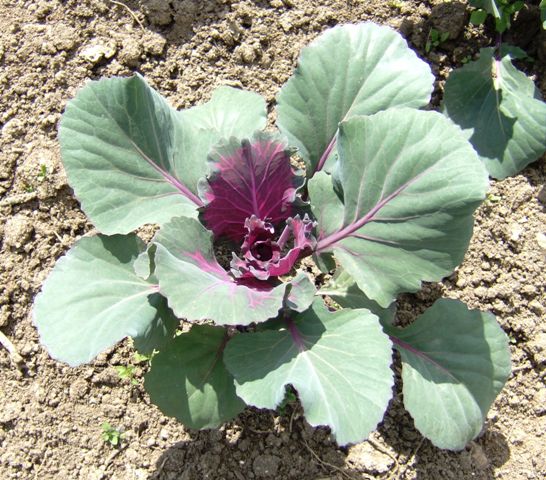 |
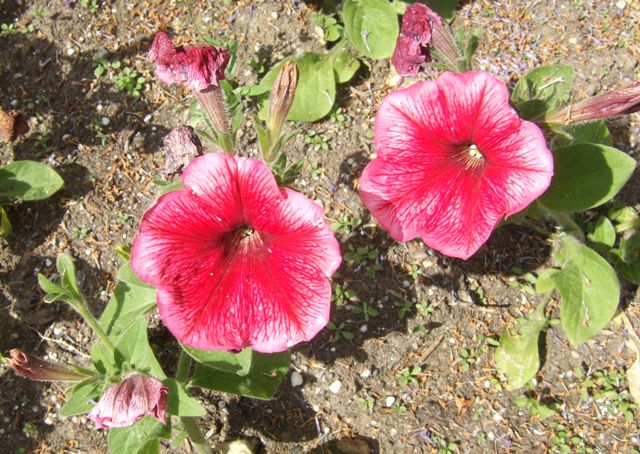 |
Many of the common flowers we saw would not have been a surprise at home. I
did expect a rather different collection of flowers here. |
| The timing is a bit
different. Our iris were finished two months ago. |  |
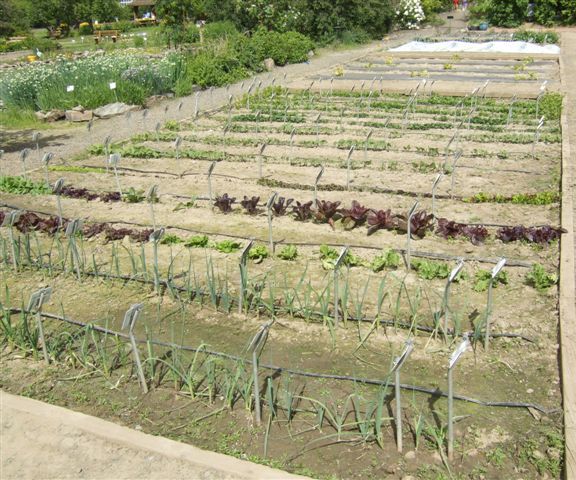 |
This is definitely an experimental vegetable garden. They are testing
different varieties to find what works best in the short growing season
here. They are also experimenting at warming the soil early with raised
beds, blanket covers and polystyrene bases under the soil. |
| There were lilacs in
profusion but the scents were not so strong. And of course they are much
later. | 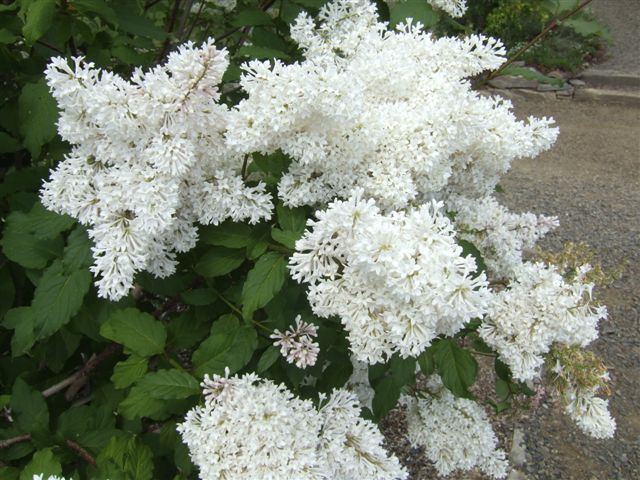 |
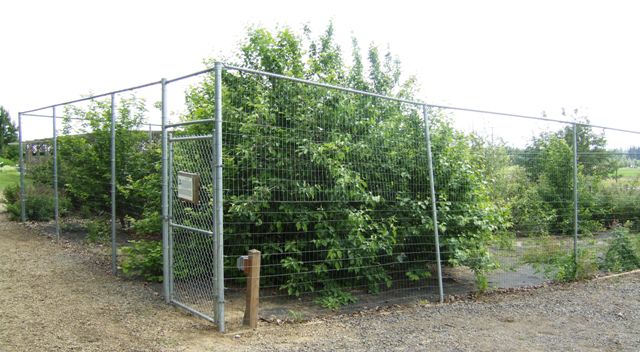 |
There are also a number of fruit trees. However the main hazard here is
browsing by passing moose, hence the sturdy wire mesh fence. |
| There was a very
attractive water garden with many iris in flower. | 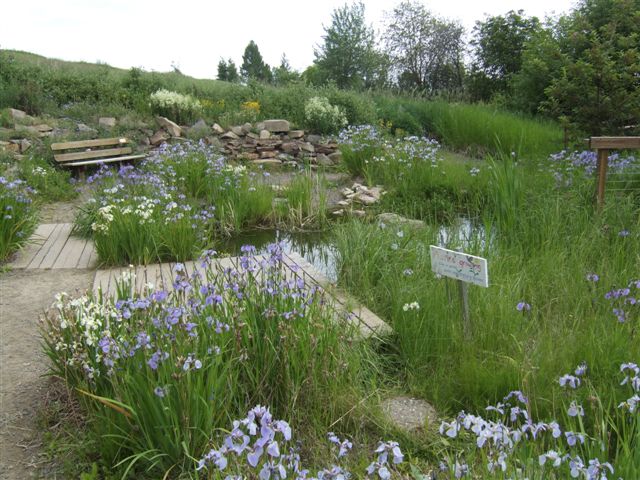 |
 |
Just up the hill is the geophysical block. A lot of work is done here
studying the weather, volcanoes and earthquakes. They also manage several
orbiting satellites. |
| Across the road is the
Butrovich building which houses the Arctic Region Supercomputing Centre. | 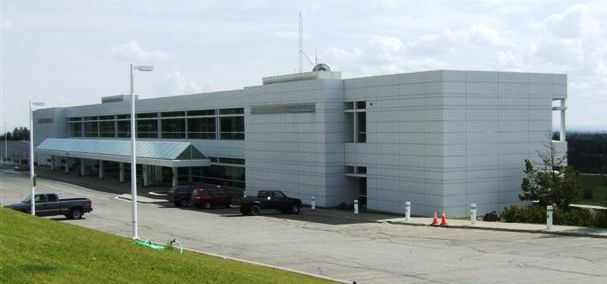 |
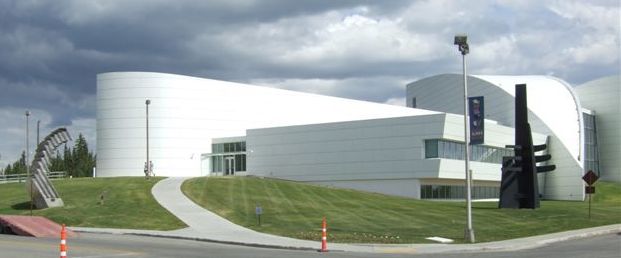 |
We were heading for the Museum of the North which is housed in this
spectacular building with views out over the city. |
| As with many museums it
contains both history and art. Not that we pretend to understand most of the
art. |  |
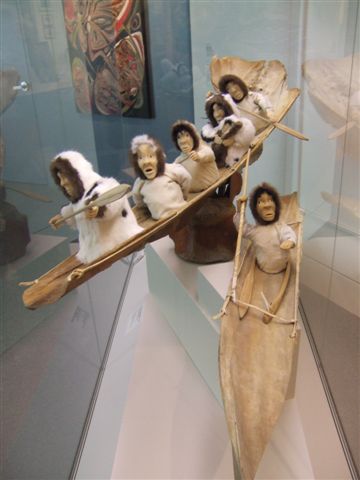 |
At least the faces do not look western as is often the case. I didn't look
at most of the titles. |
| There are many different
ethnic groups with their own languages, and clothes mostly made from skins
and beautifully decorated. However they are not everyday wear. |  |
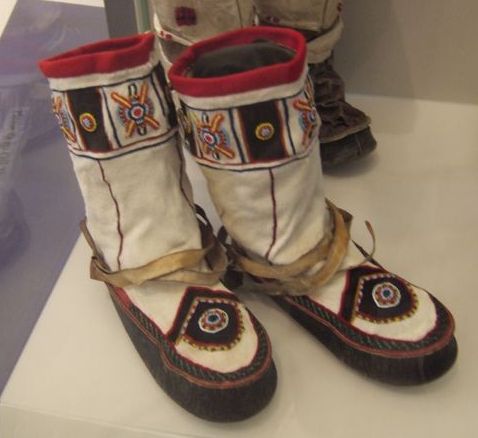 |
Boots in particular seemed to feature prominently. The soles are made of
sealskin but the uppers are more often land animal hides. |
| This is untitled but was
done in pen and ink on hide in 1936 by George Ahgupuk. |  |
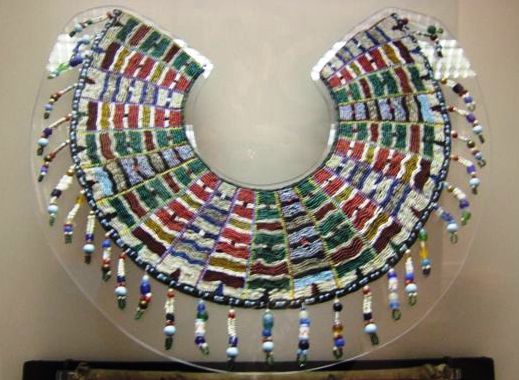 |
I was amazed at how colourful some things are, given that the far north is
so often a dark place. |
| Another parka made from
different skins. Probably not in this case but the hood is often lined with
wolverine fur because ice does not stick to it. | 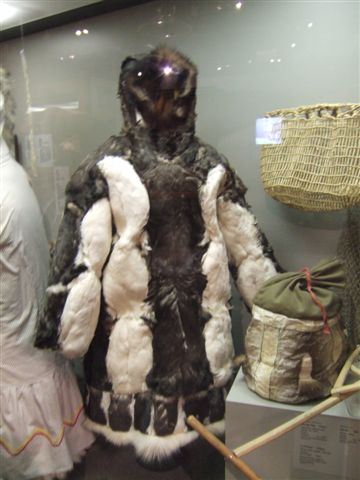 |
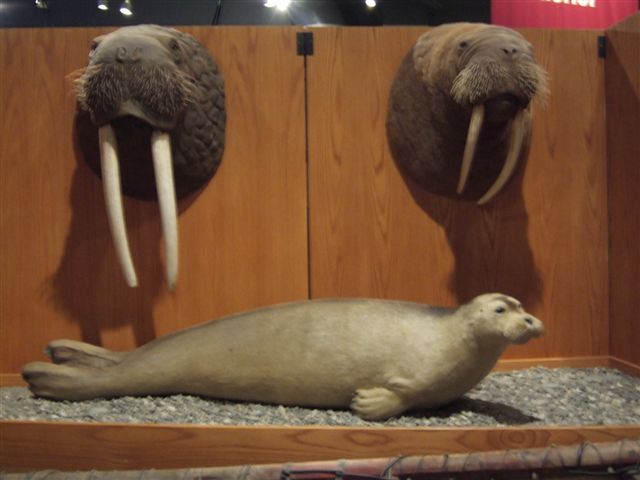 |
Walrus, elephant seal and common seal, but I'm not sure in which order. |
| There are many kayaks and
other boats on display. They all seem very flimsy, particularly for whaling
and sealing. | 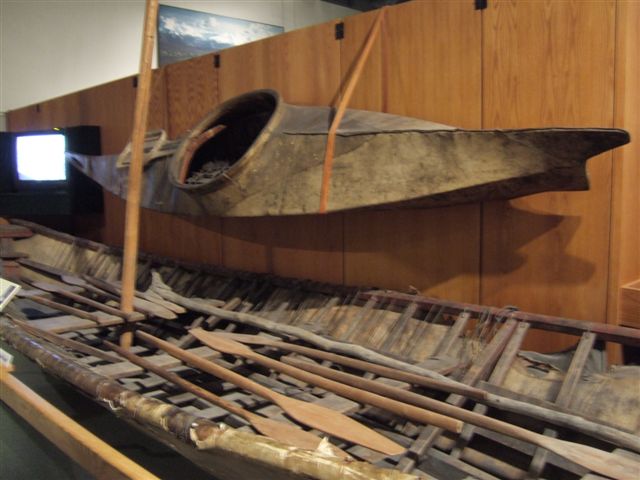 |
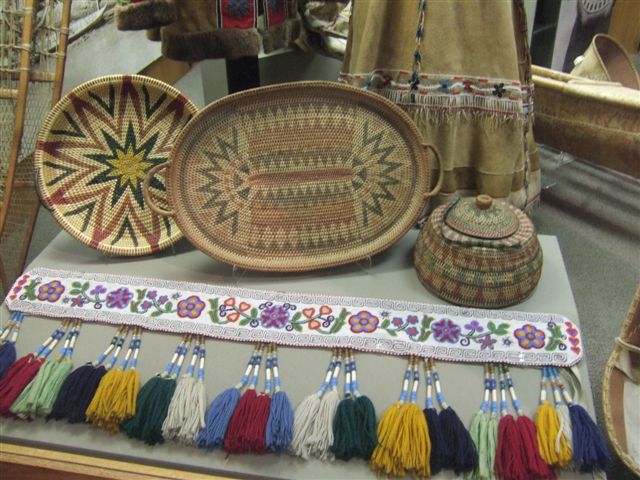 |
As in many Indian cultures there are woven baskets with wonderful patterns.
This is apparently a dying art. |
| A wolverine, the largest
of the weasel family. They range throughout Alaska. They are quite rare but
their fur is much prized. The fur is long, smooth and tapered, allowing it
to reject frost. | 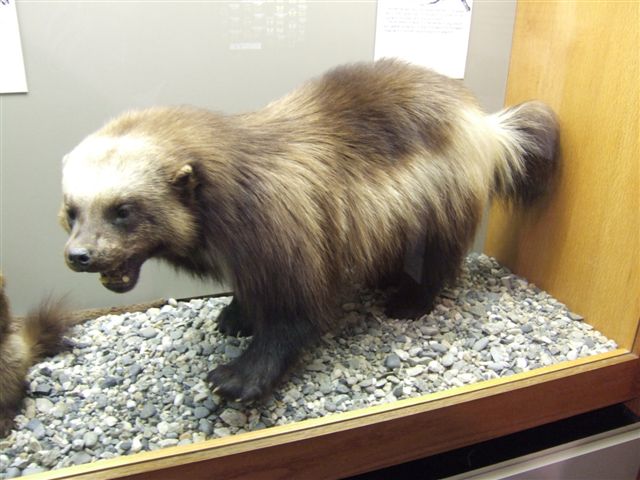 |
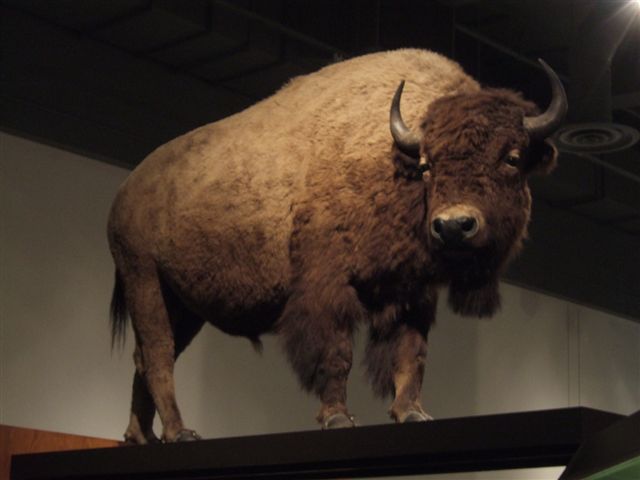 |
The buffalo or bison. There are two sorts (plains and woods) but it isn't
clear which one this is. One is larger than the other. |
| Another top. This one
looks more modern and is of a different construction. It looks woven and
felted, with an applique design outlined in buttons. | 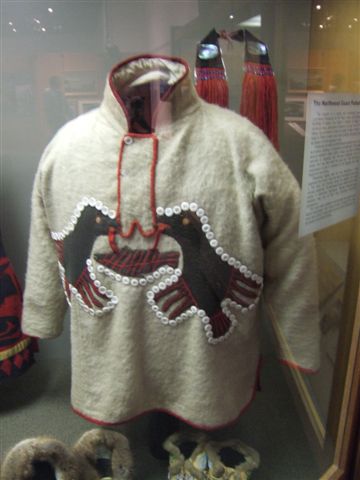 |
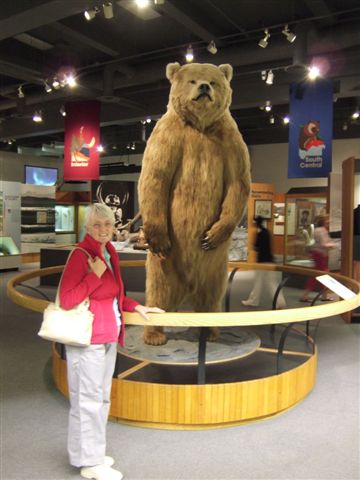 |
Just a reminder of how large the brown bear can be. All brown bears are the
same. The word grizzly tends to refer to the inland bears which are more
vegetarian and have lighter coats. The coastal bears are larger and have
darker coats as a result of their richer salmon-based diet. |
| The campus aerial farm.
Most of these have very shallow angles as their satellites are probably
better placed for the lower 48 states. | 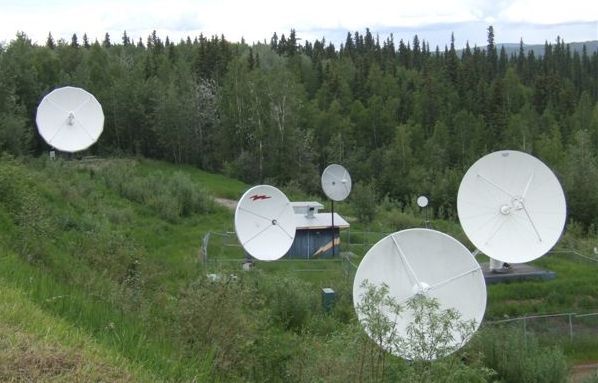 |
 |
There are more float planes based in Fairbanks than anywhere else in the
world. They are essential for access to virtually everywhere north and west
of here. |
|